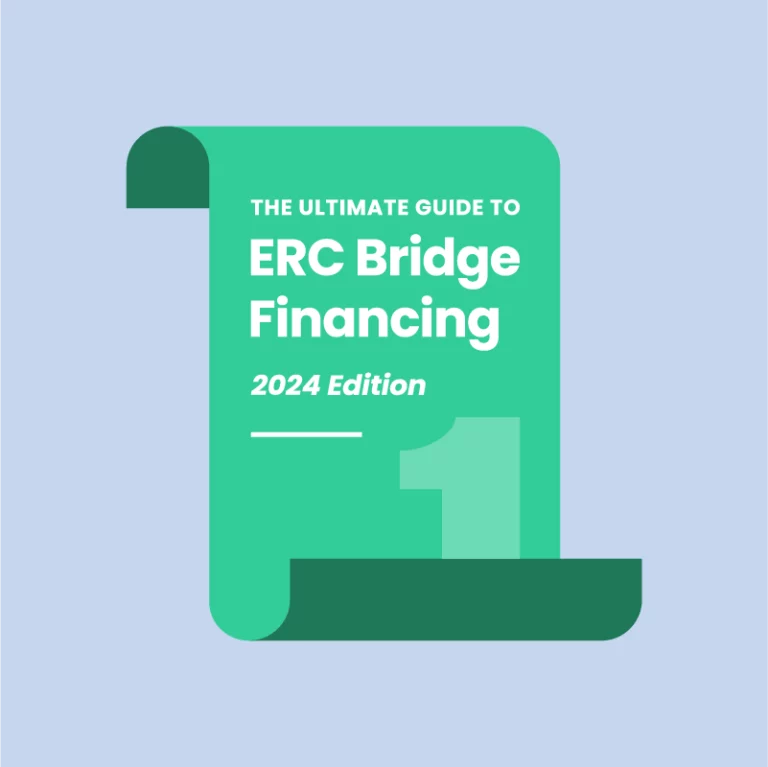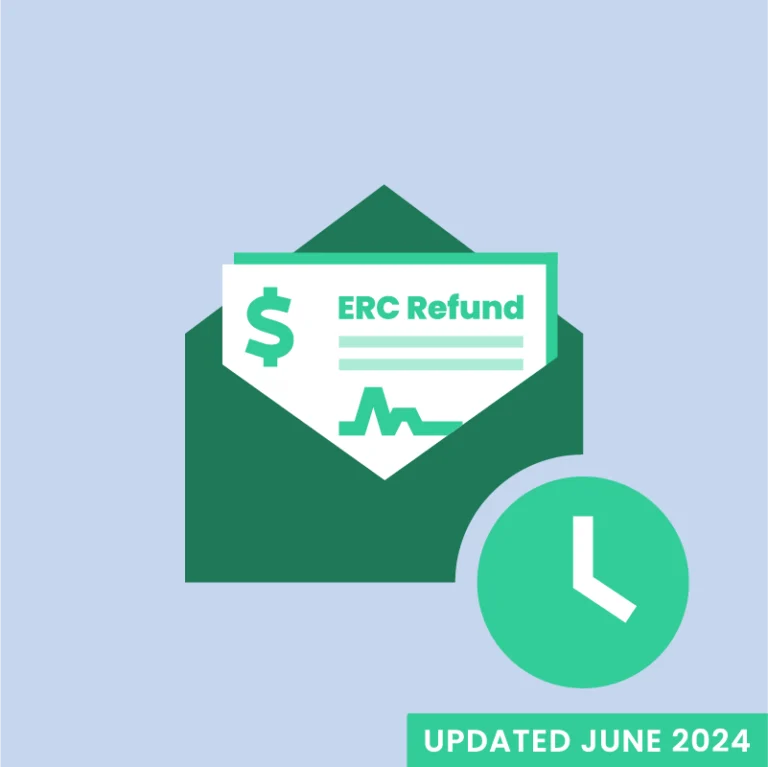Nearly three years have passed since the onset of the COVID-19 pandemic, and many employers are still struggling to recover. While popular federal relief programs like the Paycheck Protection Program (PPP) and the Economic Injury Disaster Loan (EIDL) have expired, lesser-known programs like the Employee Retention Credit (ERC) are still available. However, changes to the ERC program by the IRS have made it difficult for a lot of employers to make sense of the eligibility requirements.
For those that are unfamiliar with the ERC, it is a refundable tax credit program established under the Coronavirus Aid, Relief, and Economic Security (CARES) Act as a way to incentivize employers to retain employees through the pandemic. Although the ERC technically ended on September 30, 2021, for most employers, the ERC can be claimed retroactively by filing amendments to employers’ quarterly tax returns (941-X, 943-X, or 944-X). Recovery Startup Businesses may claim the ERC through December 31, 2021.
Who Is Eligible for the ERC?
The ERC is generally available to employers who were subject to a full or partial suspension of operations by a governmental order, or who experienced a significant decline in gross receipts. The qualification thresholds and eligibility for some business types vary in 2020 from 2021.
Note: Employers must have retained at least two full-time W2 employees that were neither a majority owner nor immediate family members of a majority owner.
ERC Eligibility Requirements for 2020
For 2020, employers can claim the ERC in Q2, Q3, or Q4 if they experienced one or more qualifying events:
- A full or partial suspension of operations by a governmental order that limits commerce, travel, or group meetings due to COVID-19. This qualification generally applies to employers that satisfy the suspension test. We will explore the suspension test further later in this article.
- A 50% or greater decline in gross receipts when compared to the same quarter in 2019. Let’s look at an example using the gross receipts test.
Gross Receipts Test | 2020 | 2019 | Decline (%) | Qualification |
|---|---|---|---|---|
Quarter Two | $65,000 | $150,000 | 56.7% | Yes |
Quarter Three | $70,000 | $150,000 | 53.3% | Yes |
Quarter Four | $60,000 | $150,000 | 60.0% | Yes |
The employer in this example qualifies for Q2, Q3, and Q4 since their gross receipts show a decline greater than 50%.
Alternatively, employers may also claim the ERC in Q2, Q3, or Q4 if one or more of their suppliers experienced a full or partial suspension of operations by a governmental order — causing a supply chain disruption. A supply chain disruption applies if the suspension impacted the supplier’s ability to deliver critical goods to the employer’s business, and the employer’s business was unable to source the same critical goods from an alternative supplier.
Governmental employers and instrumentalities of the government, including public colleges, universities, medical care, and hospital care facilities are ineligible for the ERC in 2020. Fortunately, this is not the case for the ERC in 2021.
ERC Eligibility Requirements for 2021
For 2021, employers can claim the ERC in Q1, Q2, or Q3 if they experienced one or more qualifying events:
- A full or partial suspension of operations by a governmental order that limits commerce, travel, or group meetings due to COVID-19.
- A 20% or greater decline in gross receipts when compared to the same quarter in 2019. Let’s look at another example using the gross receipts test.
Gross Receipts Test | 2021 | 2019 | Decline (%) | Qualification |
|---|---|---|---|---|
Quarter One | $100,000 | $150,000 | 33.3% | Yes |
Quarter Two | $130,000 | $150,000 | 13.3% | No |
Quarter Three | $125,000 | $150,000 | 16.7% | No |
The employer in this example qualifies for Q1 since their gross receipts show a decline greater than 20%. Although the employer does not qualify in Q2 and Q3, Q2 would be included in the employer’s ERC calculation.
Once again, employers may also claim the ERC in Q1, Q2, or Q3 if they experienced a supply chain disruption. The same rules from 2020 apply in 2021.
Public colleges, universities, medical care, and hospital care facilities are eligible for the ERC in 2021.
ERC Eligibility Requirements for Recovery Startup Businesses
For recovery startup businesses, employers can claim the ERC in Q3 and Q4 of 2021. All the following must be true for an employer to qualify as a recovery startup business:
- The employer’s business must have started after February 15, 2020.
- The employer’s annualized gross receipts must not have exceeded $1-Millon in 2020 or 2021.
- The employer’s business does not satisfy either of the other two ERC qualifications for 2021.
Applying the Suspension Test
The first step is to establish whether an employer’s business was affected by a relevant governmental order — defined as any order, proclamation, or decree from a federal, state, or local government agency due to COVID-19 that limits commerce, travel, or group meetings. A governmental order must have jurisdiction over an employer’s operations and compliance with the order must be mandatory. The level of enforcement, however, is not important.
The second step is to determine whether the governmental order impacted more than a nominal portion of the employer’s operations, or whether the governmental order had more than a nominal effect on the employer’s operations. Each of these “safe harbors” was introduced in IRS Notice 2021-20 for the purpose of applying the suspension test. If the employer’s operations were fully or partially suspended, then the first safe harbor (i.e., more than a nominal portion) would be used. If the employer’s operations were only modified, the second safe harbor would be used.
Under the first safe harbor, the impacted portion of the employer’s operations is deemed “more than nominal” if either of the following is true (when compared to the same calendar quarter in 2019):
- The gross receipts from that portion of the employer’s business comprise at least 10% of the employer’s total gross receipts.
- The hours of service performed by employees in that portion of the employer’s business make up at least 10% of the employer’s total employee service hours.
Under the second safe harbor, the effect of the modification on the employer’s operations is deemed “more than nominal” if there is a 10% or greater reduction in the employer’s ability to provide critical goods or services in its normal course of business.
Note: A precondition of the suspension test is that the employer’s business could not continue operating at a similar capacity via telework.
Other ERC Eligibility Nuances to Consider
Alternative Quarter Election
An employer may also satisfy the gross receipts test for a calendar quarter in 2021 by comparing its gross receipts for the immediately preceding calendar quarter with those for the corresponding calendar quarter in 2019. For example, an employer may elect to use its Q4 gross receipts from 2020 compared to its Q4 gross receipts from 2019 to satisfy the gross receipts test for Q1 of 2021.
Limitation on Qualified Wages for the ERC
When an employer qualifies for the ERC under a full or partial suspension by a governmental order, the employer can only include wages for the period in which the order was in effect.
Conclusion
Assessing employers’ eligibility for the ERC program is a challenging endeavor (even for CPAs, accounting firms, payroll companies, and tax preparers), but for those that are eligible — this momentous opportunity is worth the effort. Employers should consult a tax professional to help them navigate the complexities of qualifying and applying for the ERC.
Find Out If You’re Eligible for the ERC
You may be eligible for a payroll tax refund of up to $26,000.00 per employee in 2020 or 2021. This is money you’ve earned, brought to you by the company you trust. Submit an ERC application online to find out if you’re eligible or schedule an ERC consultation to learn more.



